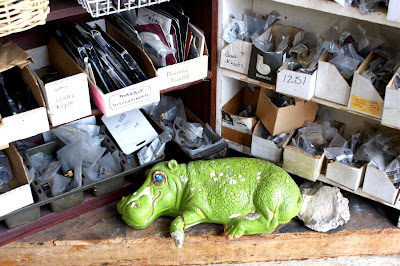We went for a familiar trip this weekend to North Bend & Coos Bay but having our Saturn Astra for a tow car we were able to do more exploring than usual. We crossed the Conde B. McCullough bridge going north and got this picture from Horsfall Road looking east.
This 5,305-foot steel cantilever truss bridge, designed by master bridge engineer Conde B. McCullough, was the longest structure on Oregon’s highway system when constructed in 1936. It spans the entrance to Coos Bay, carrying U.S. Hwy. 101.
We had never taken this road that goes west from Highway 101 and found a pleasant surprise in some of the view areas. There were a few ponds...
... with wonderful views...
...and even some Scotch Broom, considered a scourge, since it has taken over from the more native plants in Oregon, Washington State and Northern California.
Scotch broom is a pioneer species known to displace native plant species and increase the costs of timber production. It readily invades disturbed sites, natural areas, dunes and public and private forest lands. Maintenance of rights-of-way, facilities, parkland and private property costs millions of dollars each year because of rapid growth of young plants and the plant's persistent nature. Seeds of Scotch broom are long-lived (50 years plus) and mature plants are prolific seed producers, establishing persistent seed banks requiring long-term management objectives. The largest costs attributed to scotch broom come from additional inputs needed to establish trees in commercial and public timberlands. It is estimated that Scotch broom costs Oregon $47 million dollars annually in lost timber production.
Some of the views are terrific like this one looking down the road from a view area...
... with a great old stump at the entrance.
Farther west we came to a boat launching area and even with the heavy over cast I managed to get a few good pictures...
... of the pilings in the bay...
...that stand like sentinels of the timber industry.
We then drove east across highway 101 and drove around the bay finding water fowl like these Baffleheads.
Buffleheads have evolved their small size in order to fit the nesting cavity of their "metabiotic" host, a woodpecker, the Northern Flicker. Due to their small size, they are highly active, undertaking dives almost continuously sustained by their high metabolism. They do not tend to collect in large flocks; groups are usually limited to small numbers. One duck will serve as a sentry, watching for predators as the others in the group dive in search of food. Buffleheads are amongst the last waterfowl to leave their breeding grounds and one of the world's most punctual migrants, arriving on their wintering grounds within a narrow margin of time.
We also spotted a great white egret in the same area but it flew into the distance when I stopped to get a picture.
On the drive we went from North Bend to Coos Bay where I found a flock of VWs in lot right on the road, too cool.
We proceeded from there to Bastendorff beach where I found some kelp washed up on the beach...
... along with sea gulls...
... and a few black birds.
I liked the grasses growing on the beach...
and some of the driftwood.
Another new place for us to visit is the South Slough National Estuarine Research Reserve a 5,000 acre natural area located in the Coos estuary on the south coast of Oregon.
The Reserve was designated in 1974 as the first unit of the National
Estuarine Research Reserve System , a network of estuarine
habitats protected and managed for the purposes of long-term research,
education, and coastal stewardship. Established by Congress in 1972 as
part of the Coastal Zone Management Act and is
administered as a partnership between the National Oceanic and
Atmospheric Administration (NOAA) and the coastal states.
South Slough encompasses a mixture of open water channels, tidal
and freshwater wetlands, riparian areas, and forested uplands.
The
Reserve supports and coordinates research, education, and stewardship
programs which serve to enhance a scientific and public understanding of
estuaries and contribute to improved estuarine management. \
Over the
past 37 years, South Slough has grown in the depth and scope of its
programs and developed facilities to meet the needs of visitors and
staff.
While we were there several teachers were being given education on science education and were working together, like students, to better understand this area.
I did like that we found a "Flowering Current" much like one we have growing next to our home.
As were were leaving South Slough I got a picture of another huge tree stump and was reminded that some worthwhile things last and give us awe beyond there individual lives.
Quote of the Day ~
"Up to 80 percent of the fish that we catch spend at least part of their lives in estuaries.
" ~ Jim Gerlach




























































